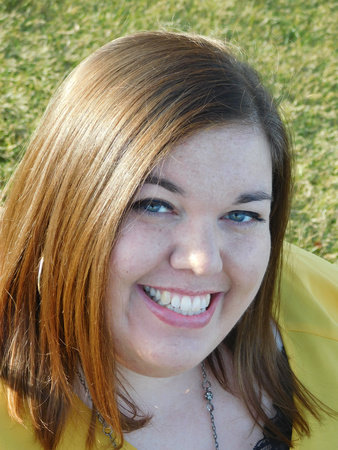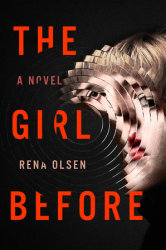Rena Olsen’s interest in human nature was sparked by moving around a lot while growing up, following her minister father from church to church. She earned a bachelor’s degree in psychology and a master’s degree in marriage and family therapy. A licensed therapist, she now works in Des Moines, Iowa, and is a newly published author. The Girl Before is her first novel. Olsen joined Penguin Random House to discuss psychological thrillers, the importance of character, and how her book came about.
PENGUIN RANDOM HOUSE: Home invasion likely ranks as one of the most feared crimes. The sense of violation one must feel upon being subjected to it must be terrifying. In setting up the plot of your debut novel, The Girl Before, why did you choose to start with a scene in this vein?
RENA OLSEN: At its heart, The Girl Before is a pretty quiet thriller. There are points of action, but most of the suspense comes from Clara’s own wrestling with facts and the beliefs she’s held her entire life. Clara herself is a steady personality. She has dealt with countless traumas throughout her life, as the reader learns. She needed a completely unexpected shock to jolt her into the story, something that would be difficult to explain away, as she is so adept at doing. For her entire life, Clara has expected violation, reasoned that it’s just the way of things. This home invasion and subsequent separation from her family is the one type of violation she didn’t expect, from outsiders no less.
PRH: You have a bachelor’s degree in psychology and a master’s degree in marriage and family therapy, and are a licensed therapist. What was it about writing a novel and pursuing the author hat that appealed to you?
RO: A good novel, in my opinion, is character-driven. Others would disagree and say that plot drives a novel, but for me it’s always been the characters. In order to have good characters, you have to understand them, know how they tick, know what their favorite breakfast cereal is, know how they would react in every situation. (When I’m stuck, I like to add a dragon and catalogue my characters’ responses. It doesn’t typically stay in the narrative, but I always learn a lot about my characters.) Getting a degree in psychology and then in marriage and family therapy and working in therapeutic settings for ten years has taught me a lot about human nature. Beyond that, I love stories, and I love to tell stories. The two worlds actually have quite a beautiful synchronicity.
PRH: If you could only give one piece of advice to debut authors for the rest of your life, what would that piece of advice be?
RO: Breathe. The words will be there. Take time to take care of yourself, and don’t focus so much on what other people are saying. There are the people who you kind of have to listen to, like your publisher and your agent, but other than that, don’t focus on trying to please everyone. Take a deep breath and remember that you are a creator of worlds, a master of universes of your own creation. You are powerful. You are mighty. Never forget that. (Let’s pretend that’s just one piece of advice, mmk?)
PRH: The format of your novel – switching rapidly back and forth between then and now – adds to the already fast pace of the story. Why did you choose to go with this format in such abbreviated pieces? What was most challenging about executing on it?
RO: The story came to me that way, in bits and pieces, especially the Then sections. They really reflect Clara’s functioning throughout the story. Her mind is always working to make sense of her world. The most challenging piece actually came after the book was written. The scenes didn’t always fit naturally where they first showed up in the story. I created a giant color-coded sticky note storyboard on a wall in my apartment and worked with my agent and my editor to find the best flow for the story. It was a dance of figuring out when to reveal certain bits of information and what to hold back to increase tension. I’m very happy with the end result.
PRH: This format unveils the underlying truth of The Girl Before in a very original way. Did you know where you were going with the plot from the start? Or was it your own storytelling that gradually led you to this place?
RO: The last line of the book was the first one I wrote. I knew my destination before I knew the journey, and I had a very basic idea of how to get there, but the way I write is similar to hopping in a car with a destination in mind but leaving the maps (and GPS) behind. I wasn’t sure where all the stops would be, and there were times in the writing that I had to stop and backtrack to find my way, but part of the joy in writing for me is that discovery. The end is always my starting point for my stories, though I write my books in order after that. I just like to know where I’m going and let the characters take me for a ride.
PRH: Will you be working on a new novel soon?
RO: I’m currently working on my second novel for Putnam, as yet untitled. It’s another psychological thriller and is based on a short story I wrote a few years ago. The idea grew from a challenge/prompt my cousin gave me of, you guessed it, the ending of the story. I’m very excited for it!













